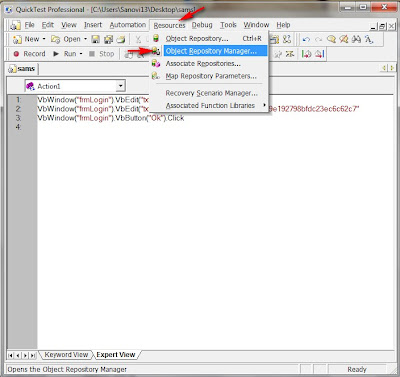I Operational Overview Of Recording:
During Recording QTP will do the following :1) It will generate corresponding Test script statements for each and every user action on the application.
2) It will store the required related & related object's information in the 'Object Repository'.
II Operational Overview Of Running:
During Running QTP will do the following:1)It will read the script statements and understand what action to be performed the which object.
2)It realize, first i need to identify the object to do that action and for that i need some information.
3)It will go to the object repository & search for the required information.
4)Once the required information is formed using that info it will try to identify the object.
5)If at all the object is formed then it will perform the action.
Recording & Run settings:
Navigation:
click on Automation menu ---> select the option 'Record & Run settings' ---> click on Apply button & OK button.Recording Modes:
There are 3 recording modes in QTP.Those are listed below:
1) Normal/Context Recording Mode
2) Analog Recording Mode
3) Low Level Recording Mode
1. Normal Recording Mode:
This recording mode is used to record the operations performed on the 'standard GUI objects' in different contexts.
2. Analog Recording Mode:
This is a special recording mode provided by the QTP which is used for Recording the Continuous operations.
Navigation:
keep your tool under recording mode-->activate the menu item 'Automation'-->select the Analog Recording---> select the one of the following options:
Record relative to the screen
Record relative to the following window.












